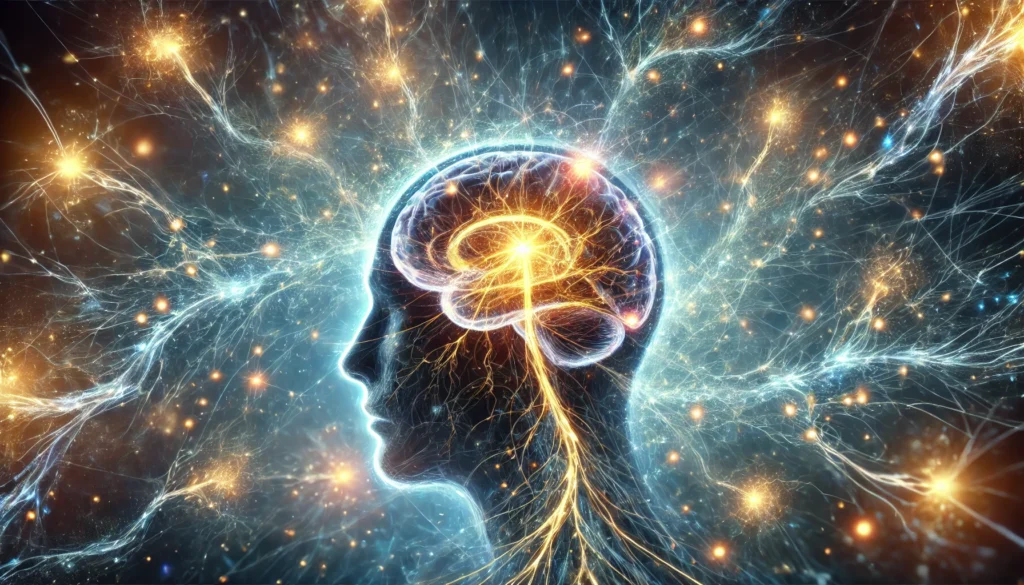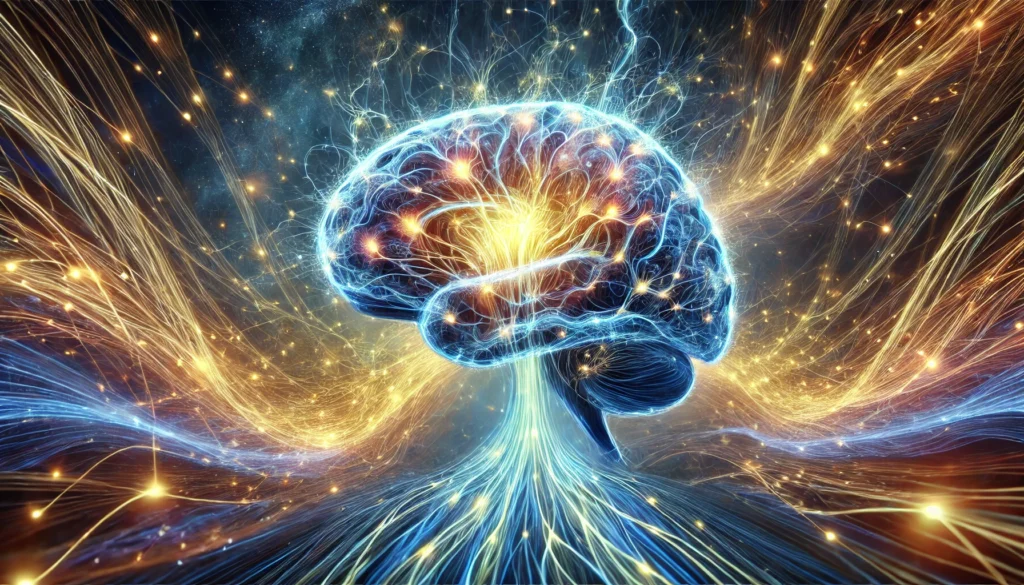Understanding Neuroplasticity and Its Role in Brain Injury Recovery
Neuroplasticity is the brain’s remarkable ability to reorganize itself by forming new neural connections throughout life. This adaptive capability is especially crucial in the context of brain injury, where damaged neural pathways can be rerouted or even replaced by alternative connections. The human brain is not a rigid, fixed entity; rather, it continuously adapts to new experiences, learning processes, and environmental influences. When brain injury occurs, whether through trauma, stroke, or other neurological conditions, neuroplasticity becomes the foundation for recovery.
You may also like: How to Increase Neuroplasticity: Strengthening Neural Pathways for Better Memory & Recall
One of the most compelling aspects of neuroplasticity is its ability to facilitate rehabilitation after brain injury. The brain’s capacity for change means that individuals can relearn skills, regain cognitive function, and enhance memory recall, even after significant neurological damage. Examples of neuroplasticity after brain injury demonstrate the extent to which targeted interventions can foster recovery. Studies have shown that individuals who engage in consistent neuroplasticity exercises for brain injury experience improvements in cognitive function, speech, motor skills, and memory retention. By harnessing the principles of neuroplasticity, patients and healthcare providers can work together to rebuild and strengthen neural pathways, ultimately leading to enhanced cognitive abilities and quality of life.
The Science Behind Neural Pathway Strengthening
Neural pathways are the connections that facilitate communication between different regions of the brain. These pathways are essential for cognitive functions, including memory, attention, and problem-solving. When brain injury disrupts these pathways, individuals may experience difficulties in recalling information, concentrating, or even performing basic daily tasks. However, the concept of neuroplasticity suggests that with appropriate exercises and interventions, these connections can be repaired or new ones can be formed to compensate for lost function.

Research in neuroscience has identified various mechanisms that drive neural pathway strengthening. One of the primary processes involved is synaptogenesis, the formation of new synapses between neurons. This process is crucial in post-injury recovery, as it allows for the re-establishment of neural communication. Additionally, myelination, the process of insulating nerve fibers, enhances the efficiency of signal transmission, further supporting cognitive and motor function improvements. Another important mechanism is long-term potentiation (LTP), which strengthens synaptic connections through repeated use and reinforcement. This principle underscores the importance of engaging in consistent and structured neuroplasticity exercises for brain injury, as repetition and practice solidify these newly formed connections.
Examples of Neuroplasticity After Brain Injury
There are numerous documented cases and scientific studies that highlight examples of neuroplasticity after brain injury. For instance, stroke survivors who have lost the ability to speak due to damage in the brain’s language centers have demonstrated remarkable progress through intensive speech therapy. This therapy encourages the brain to rewire itself, allowing other regions to compensate for the lost function. Similarly, individuals who have suffered traumatic brain injuries and have lost motor function in one limb have shown significant improvement through physical therapy and constraint-induced movement therapy, which forces the brain to develop new motor pathways.
Another compelling example involves musicians who have suffered brain injuries. Due to their extensive practice and deeply ingrained neural connections, many musicians can regain their ability to play instruments through targeted rehabilitation. This phenomenon is attributed to the redundancy of neural pathways—when one route is damaged, the brain can tap into alternative pathways to restore function. Such examples reinforce the incredible potential of neuroplasticity and the effectiveness of tailored rehabilitation strategies in cognitive and motor recovery.
Effective Neuroplasticity Exercises for Brain Injury Recovery
Engaging in neuroplasticity exercises for brain injury is essential for strengthening neural pathways and enhancing memory and recall. These exercises should be tailored to an individual’s specific needs and cognitive challenges. Some of the most effective neuroplasticity exercises include memory training, mindfulness practices, cognitive stimulation techniques, and physical activities that integrate mental engagement.
Memory training exercises, such as mnemonic devices, visualization techniques, and structured recall practices, help reinforce memory retention and retrieval. Mindfulness and meditation have also been shown to enhance neuroplasticity by promoting neural connectivity in regions associated with attention and emotional regulation. Additionally, engaging in cognitively stimulating activities, such as puzzles, reading, and learning new skills, encourages the brain to establish new neural pathways. Physical exercises, particularly those that require coordination and strategic thinking, such as dance or tai chi, further enhance brain connectivity by integrating movement and cognition.
The Role of Nutrition and Lifestyle in Neural Pathway Strengthening
In addition to targeted exercises, lifestyle factors play a crucial role in neuroplasticity. A diet rich in omega-3 fatty acids, antioxidants, and essential nutrients supports brain health and facilitates neural repair. Regular physical activity increases blood flow to the brain, promoting the growth of new neurons and enhancing synaptic plasticity. Quality sleep is another critical factor, as it consolidates memories and facilitates synaptic remodeling.
Social engagement and meaningful interactions also contribute to neuroplasticity. Engaging in conversations, participating in group activities, and maintaining strong social connections stimulate cognitive functions and reinforce neural pathways. Stress management techniques, such as deep breathing, yoga, and relaxation exercises, further support neuroplasticity by reducing the detrimental effects of chronic stress on the brain.
Frequently Asked Questions (FAQ) on Neuroplasticity Exercises for Brain Injury
1. How long does it take to see improvements from neuroplasticity exercises for brain injury?
The timeline for noticeable improvements varies depending on the severity of the brain injury, the individual’s commitment to rehabilitation, and the types of neuroplasticity exercises implemented. Some individuals may begin to experience minor improvements in cognitive functions within a few weeks, while more significant progress might take several months or even years. One of the most critical factors in recovery is consistency—repeating neuroplasticity exercises for brain injury daily helps reinforce new neural pathways. Additionally, incorporating complementary therapies such as speech therapy, occupational therapy, and structured social interactions can accelerate progress. Since neuroplasticity is an ongoing process, long-term engagement with cognitive training and mental challenges is essential for sustained improvement.
2. Can neuroplasticity exercises for brain injury help with emotional regulation?
Yes, neuroplasticity exercises play a significant role in emotional regulation, especially for individuals who have experienced brain injuries affecting the limbic system or prefrontal cortex. Cognitive exercises that promote mindfulness, deep breathing, and emotional recognition help retrain the brain to process emotions more effectively. Engaging in structured problem-solving tasks, social interactions, and even guided therapy sessions can reinforce neural pathways associated with emotional stability. Furthermore, examples of neuroplasticity after brain injury show that individuals who participate in guided emotional therapy can regain better impulse control and stress management. Over time, structured cognitive and emotional exercises enhance the brain’s ability to process emotions healthily and adaptively.
3. Are there specific neuroplasticity exercises for brain injury that enhance memory retention?
Yes, memory retention can be significantly improved through targeted neuroplasticity exercises for brain injury. Techniques such as spaced repetition, storytelling, and memory chunking help train the brain to store and retrieve information more efficiently. Additionally, activities that combine movement with cognitive engagement, such as dance or tai chi, have been shown to strengthen neural pathways linked to memory. Practicing recall techniques, such as writing daily summaries or mentally retracing events, helps reinforce connections between neurons. Studies also suggest that structured problem-solving games and puzzles contribute to long-term memory improvements by promoting synaptic growth and stability.

4. What role does physical exercise play in neuroplasticity after brain injury?
Physical activity significantly enhances neuroplasticity by increasing blood flow to the brain, reducing inflammation, and promoting the release of neurotrophic factors that support neural growth. Examples of neuroplasticity after brain injury demonstrate that aerobic exercises such as walking, swimming, and cycling improve cognitive function by strengthening synaptic connections. Additionally, activities that require balance and coordination, such as yoga or martial arts, help engage multiple brain regions simultaneously. Regular physical activity also aids in stress reduction, which is crucial for maintaining an environment conducive to neuroplasticity. Engaging in guided physical rehabilitation exercises designed for cognitive recovery can further enhance the rewiring process.
5. How do diet and nutrition impact neuroplasticity after brain injury?
Diet and nutrition play a vital role in supporting neuroplasticity and brain recovery following an injury. Consuming foods rich in omega-3 fatty acids, antioxidants, and essential vitamins promotes neuronal repair and cognitive function. Studies on examples of neuroplasticity after brain injury indicate that diets high in healthy fats, such as those found in nuts, seeds, and fatty fish, enhance synaptic communication. Additionally, reducing processed sugar and inflammatory foods helps create a brain-friendly environment that supports neural regeneration. Hydration is also critical, as dehydration can negatively impact cognitive performance and slow down recovery. Nutrient-dense diets combined with neuroplasticity exercises for brain injury create a powerful synergy for long-term brain health.
6. Can social interactions enhance neuroplasticity in brain injury recovery?
Yes, social interactions are a crucial component of neuroplasticity, as they stimulate multiple brain regions involved in language processing, emotional regulation, and decision-making. Engaging in group activities, conversations, and structured discussions helps reinforce neural pathways associated with communication and comprehension. Examples of neuroplasticity after brain injury have shown that individuals who actively participate in social rehabilitation programs often regain cognitive skills faster. Activities such as storytelling, debate groups, or even board games encourage cognitive engagement in a dynamic, socially stimulating setting. Regular exposure to social interactions fosters adaptability, helping individuals process emotions and responses more efficiently.
7. Are there technological tools that support neuroplasticity exercises for brain injury?
Advancements in technology have introduced various tools that facilitate neuroplasticity exercises for brain injury, including brain-training apps, virtual reality therapy, and neurofeedback programs. Brain-training software often features memory games, problem-solving tasks, and visual recognition exercises that help reinforce cognitive skills. Virtual reality therapy provides immersive environments where individuals can practice real-world scenarios, improving both cognitive and motor functions. Neurofeedback training, which monitors brain activity and provides real-time feedback, allows individuals to regulate brain function and improve focus. These technological interventions, when combined with traditional rehabilitation techniques, offer innovative approaches to brain injury recovery.
8. How does sleep influence neuroplasticity and cognitive recovery?
Sleep is a critical factor in neuroplasticity, as it facilitates memory consolidation, neural repair, and the removal of metabolic waste that accumulates in the brain. Research on examples of neuroplasticity after brain injury suggests that deep sleep plays an essential role in synaptic strengthening and the integration of newly learned information. Sleep deprivation, on the other hand, can hinder cognitive recovery and slow down neural adaptation. Establishing a consistent sleep routine, avoiding screen exposure before bed, and engaging in relaxation techniques promote better sleep quality. Prioritizing sleep hygiene supports the effectiveness of neuroplasticity exercises for brain injury by providing the brain with the necessary conditions to heal and reorganize.
9. Can music therapy support neuroplasticity after brain injury?
Music therapy is an effective tool for enhancing neuroplasticity, as it engages multiple brain regions involved in memory, motor coordination, and emotional processing. Examples of neuroplasticity after brain injury have shown that individuals who participate in structured music therapy often experience improved speech and motor function recovery. Playing an instrument, listening to rhythm-based exercises, or engaging in guided singing therapy helps reinforce neural pathways. The repetitive and structured nature of music stimulates long-term potentiation, the process by which synaptic connections are strengthened. Music therapy also fosters emotional well-being, further supporting cognitive resilience and adaptability.

10. What are some everyday habits that support long-term neuroplasticity?
Maintaining long-term neuroplasticity requires a combination of consistent cognitive engagement, a healthy lifestyle, and continued learning. Reading, learning new skills, and engaging in problem-solving tasks help keep the brain adaptable and resilient. Practicing mindfulness, engaging in creative activities, and maintaining social connections further reinforce neural pathways. Examples of neuroplasticity after brain injury emphasize the importance of lifelong learning and mental challenges in sustaining cognitive function. By incorporating neuroplasticity exercises for brain injury into daily routines, individuals can support long-term brain health and cognitive flexibility.
Conclusion: Embracing Neuroplasticity for Lifelong Cognitive Health
The ability of the brain to adapt, reorganize, and create new neural pathways offers immense hope for individuals recovering from brain injury. By engaging in targeted neuroplasticity exercises, individuals can strengthen cognitive functions, enhance memory and recall, and regain lost abilities. The integration of cognitive training, mindfulness practices, physical activity, proper nutrition, and a supportive lifestyle creates a comprehensive approach to brain health and recovery.
Examples of neuroplasticity after brain injury continue to demonstrate the incredible resilience of the human brain. With consistent effort and the right interventions, individuals can tap into the power of neuroplasticity to restore and even enhance cognitive function. The journey of neural pathway strengthening is one of persistence, dedication, and an unwavering belief in the brain’s ability to heal and adapt. By embracing these principles, individuals recovering from brain injuries can cultivate a future of cognitive vitality and improved quality of life.
Further Reading:
Neuroplasticity Therapy: How It Helps Brain Injury Recovery
Neuroplasticity: How the Brain Heals and Adapts
Important Note: The information contained in this article is for general informational purposes only, and should not be construed as health or medical advice, nor is it intended to diagnose, prevent, treat, or cure any disease or health condition. Before embarking on any diet, fitness regimen, or program of nutritional supplementation, it is advisable to consult your healthcare professional in order to determine its safety and probable efficacy in terms of your individual state of health.
Regarding Nutritional Supplements Or Other Non-Prescription Health Products: If any nutritional supplements or other non-prescription health products are mentioned in the foregoing article, any claims or statements made about them have not been evaluated by the U.S. Food and Drug Administration, and such nutritional supplements or other health products are not intended to diagnose, treat, cure, or prevent any disease.


